January can be the beginning of your creative gardening year in your greenhouse or polytunnel. It’s the first awakening of the year. You can start off new seedlings on your propagator and sow and plant the first vegetables into the ground. I always think that the first sowings and plantings are the most special and you are not yet in a rush and can still relax and enjoy the work.
Buy yourself a garden diary and take note of when and what you sow, which varieties perform well, what crops do well and which ones can be improved. A garden diary is as good as any university – it helps you to learn from your own experience and nothing can surpass your own local knowledge that is specific to your own soil and site.
You should also order your seeds, seed potatoes, onion sets and garlic bulbs now if you haven’t done so yet. It’s always handy to have them ready when you need them.
It’s also time to plan your indoor cropping. It is a lot more confusing than growing vegetables outdoors as you can get a number of crops per bed per year. You may plan a bed at a time and try your best to fit them in some sort of rotation in order to prevent a build-up of soil-borne pests and diseases.

Sowing in the polytunnel
Direct sowing into beds
The only crops I sow directly into the tunnel or greenhouse soil in January are early carrots (Namur F1 or Amsterdam Forcing) and early forcing type radishes (Short Top Forcing). I usually sow them at the very end of January. Obviously delay the sowing if it is very cold. The beds can be pre-warmed a couple of weeks beforehand by covering with black plastic which is removed a couple of days before sowing. After sowing the crop can be protected from the cold using a fleece. You can mix in a few radish seeds with the carrots. The radishes will quickly germinate and will indicate where the carrot row will be. This enables you to hoe between the rows.
Planting into beds
Towards the end of the month you can plant your first early chitted potatoes (Homeguard or Sharpe’s Express). You can start chitting your potatoes in December. It’s important that you will have some fleece handy for covering up your emerging potato shoots to protect them from frosty spells.
In late January you can plant strawberries into your tunnel or greenhouse. The plants come from well-established runners from the previous year which were potted on and left outdoors until now. These will produce an extra early crop of delicious strawberries from April onwards.
Sowing into modules / pots (18-20°C)
Towards the end of January you can sow the following vegetables into modular trays and place them in your propagator or warm, south-facing windowsill in the house:
- Cabbage (Hispi F1 or Pyramid F1) – 1 seed per cell
- Coriander (Leisure) – 5 seeds per cell
- Chervil (Massa) – 5 seeds per cell
- Dill (Dukat) – 5 seeds per cell
- Leeks (Roxton F1) – 2 seeds per cell
- Lettuce (various types) – 1 to 3 seeds per cell
- Mangetout peas (Sweet Horizon) – 4 seeds per 7cm pots
- Onions (Golden Bear F1) – 4 seeds per cell – for planting outside in April
- Oriental salads (mizuna, rocket, tatsoi, etc.) – 5 seeds per cell
- Scallions (Parade or Ishikura) – 5 to 10 seeds per cell, depending on how many you like in a bunch
Harvesting from the polytunnel
Even in the coldest month of January you’ll be able to harvest some healthy greens. You can get a wonderful salad bowl from the salads you have sown last September or October.
These include: Salad rocket, wild rocket, various mustard leaves (Green Wave, Green in the snow, Red Frills, Green Frills), tatsoi, pak choi, corn salad, winter purslane, cress, mizuna, mibuna, komatsuna, texel greens, baby spinach, beet leaves (Bulls Blood) and possibly even some lettuce leaves.
General greenhouse / polytunnel maintenance
- Clean and wash plastic or glass panes and all pots and trays.
- Replace cracked panes of glass and repair any rips in the plastic with special tape.
- Keep an eye out for loose clips and repair as soon as you possibly can.
- Set up your heating bench or propagator.
- Keep the soil moist but not too wet.
- Ventilate on sunny days.
You can pre-warm the soil by covering some empty beds with black plastic especially if you plan to direct sow an early crop.
This is the best time to prune your grapevine (if you have one). Grapes could easily take over any tunnel or greenhouse, so be ruthless with the secateurs. Prune back all shoots from the last year and only leave a little stub with one or two buds on it. The new grapes will form on the new growth.
If you haven’t done so yet, clean your tools and rub boiled linseed oil onto the handles and a mixture of old oil and diesel to get rid of rust on metal blades.
You can get John’s book Vegetable Growing Month-by-Month here.

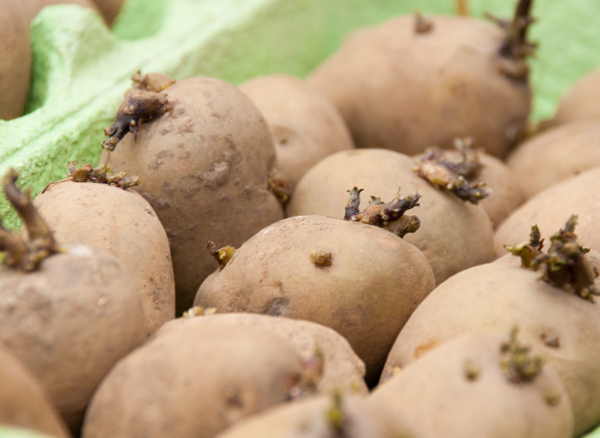
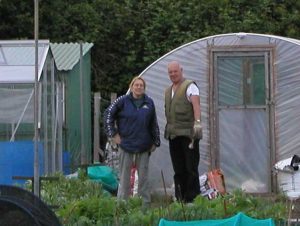
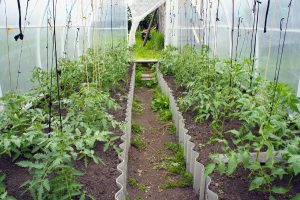
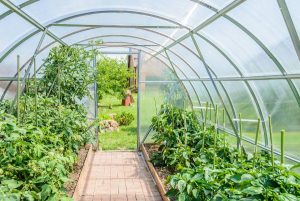
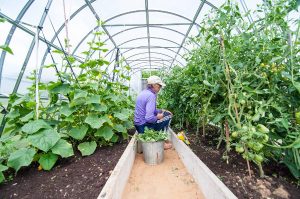
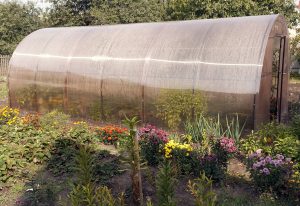
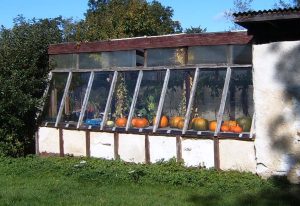
1 Comment
Plus tomato seeds in a propagator